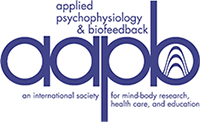Slouching posture may be observed when people interact with digital devices such as sitting at a computer screen or looking downwards at a smartphone while sitting or walking. The study investigated two procedures: the effect of head position on perceived head rotation and the effect of neck scrunching on symptom development. In the first study, 87 students sat in either a head-erect or head-forward position and rotated their heads from side to side. Ninety-two percent of the participants reported that they significantly increased their head rotation range during the head-erect position as comparted to the head-forward position, and that it was much easier to rotate their head in the erect position (M = 8.5; SD = 2.4) than in the slouched position (M = 4.3; SD = 1.9), F(1, 171) = 152, p < 0.001. In the second study, 125 students were asked to scrunch their neck for 30 seconds. After neck scrunching, 98.4% of participants reported experiencing an average pain rating of 5.3 on a scale from 0 (none) to 10 (severe), which consisted of pressure in the head (M = 6.7), stiff neck (M = 5.9), eye tension (M = 4) and headaches (M = 3.8). For a subset of 12 students, the effects of head-forward position and neck scrunching (compression) on cervical and trapezius muscles was monitored with electromyography. The average cervical surface electromyography (sEMG) was higher during head-forward position and neck scrunching than during pre- and post-baseline, and the average trapezius sEMG was higher during the neck scrunching than during pre- and post-baseline. For most participants, the effect of their head/neck position on rotation and neck scrunching on symptom development was a total surprise. Experiential practices can provide somatic feedback as an education tool to teach awareness and thus motivate participants to change their body posture so that they reduce slouching and neck scrunching.

(a) Slouching while sitting (photo © Annette Booiman, model Marcella Sjollema). (b) Slouching while texting (from http://news.sfsu.edu/news-story/digital-addiction-increases-loneliness-anxiety-and-depression).

Head-erect versus head-forward position.

Percent of participants who reported in which position it was easier to rotate the head.

Self-report of ease of head rotation.

Trying to read the laptop screen, which causes the head to go forward.

Example of sEMG recorded of the left side of C4 when a person slightly slouches or sits erect.

Sitting erect and with neck crunched.

Symptoms induced by 30 seconds of neck scrunching.

Change in cervical and trapezius sEMG during head forward and neck scrunching.

Representative sEMG recording during head-forward and neck-scrunching positions.





Contributor Notes
